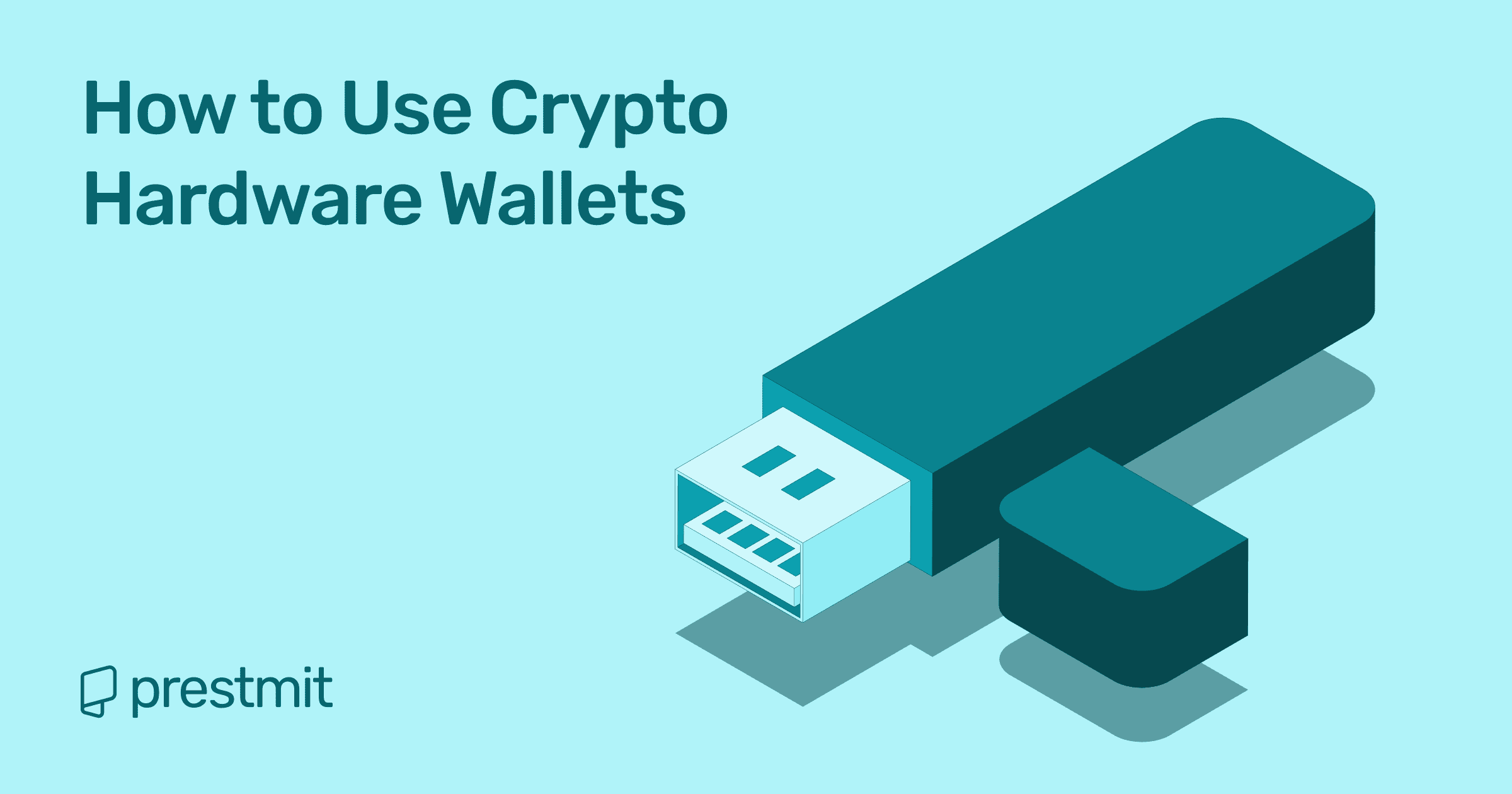Table of Contents
Have you ever thought of storing your life savings in a shoebox, taping it shut, and leaving it right outside your front door? Sounds crazy when you think about it, right?
Well, that’s basically what you do when you leave your crypto on an exchange, handing over control and hoping cybercriminals don’t come knocking.
Rather than take that risk, there’s a smarter move: secure little devices called crypto hardware wallets that can protect your Bitcoin, Ethereum, and even your favorite meme coins.
They’re easy to use and perfect for anyone who wants to sleep better at night, knowing their crypto is safe from hacks, phishing scams, and disappearing exchanges.
In this guide, you’ll learn everything you need to know, without the tech jargon or fear-mongering, about setting up, using, and protecting your assets with a hardware wallet. Let’s dive right in.
What is a Crypto Hardware Wallet?

You know those metal vaults at home where you keep cash, documents, or valuables, secured with a key? A crypto hardware wallet works the same way: smaller, smarter, and designed for the digital world.
It is a physical device that stores your private keys offline. These private keys give you access to your crypto assets, and they’re exactly what hackers are after when trying to steal your funds.
Unlike online wallets that leave digital footprints, hardware wallets keep your keys completely off the grid, making them far less vulnerable to cyberattacks, malware, or phishing scams.
Some of the best-known hardware wallets include the Ledger Nano X, Trezor Model T, and BitBox02. Each has its features, but they all serve one core purpose: to keep your coins secure and in your control.
When Should You Use a Crypto Hardware Wallet?
Interestingly, not everyone needs a crypto hardware wallet. Now, before you go saying, “Oh, then I don’t need one,” here’s why that’s not the full story:
If you’re only holding a small amount of crypto for short-term trades or just testing the waters, keeping your funds in an online wallet (like Binance or Trust Wallet) is convenient enough.
However, if your goal is to go full ballistic mode, build a serious portfolio, or trade long-term, a hardware wallet is no longer optional; it’s a must.
You should seriously consider getting a hardware wallet if:
- You’re holding a large sum in crypto (e.g. $1,000+)
- You’re planning to HODL for the long term
- You use DeFi apps, interact with smart contracts, or hold NFTs
- You want to protect yourself from hacks, phishing scams, and exchange failures
I made the switch when my portfolio started to grow (around $2,000 at the time) and I kept seeing stories of people losing everything overnight.
One story that hit me hard involved a friend tricked by a fake MetaMask pop-up. He lost everything, and that was my wake-up call.
I ordered a Ledger Nano X right after, and honestly, I haven’t looked back since. The peace of mind is priceless.
So, if you’re serious about crypto, a hardware wallet isn’t a luxury; it’s a necessity.
Step by Step: How to Set Up a Crypto Hardware Wallet
You might think setting up a wallet is a bit too technical, but it’s pretty straightforward. Here’s how to do it the right way:
Step 1: Buy from the Official Website
You can buy the hardware wallet directly from the manufacturer’s website. For example, you can visit Ledger website for Ledger hardware wallets, Trezor site for Trezor hardware wallets, etc.
You may need to avoid buying from resellers or third-party stores. The wallets there can be tampered with, and you might not get the true value for your money.
Step 2: Unbox and Verify
Upon receiving the box, ensure it is sealed and untampered with. After unboxing, verify that the wallet includes a USB cable and backup cards, as these are typically provided with most hardware wallets.
Step 3: Install the Official App
Install the official app and follow the on-screen prompts to connect your device. For Ledger, Download Ledger Live, and for Trezor, Use Trezor Suite.
Step 4: Set a PIN
Setting a PIN protects your wallet from unauthorized use if it’s stolen. The PIN is usually 4-8 digits, so ensure you put something that isn’t easy to guess or too obvious, like 1234.
Step 5: Write Down Your Recovery Phrase
You’ll be shown a 12—or 24-word seed phrase. This is the most important step. Please write it down exactly, in order, and keep it somewhere safe, like a fireproof bag or steel backup, where no one can access it.
Never take a screenshot of it or store it online. Someone could gain access to it and steal your coins, jeopardizing the purpose of having the hardware wallet in the first place.
Step 6: Confirm Your Phrase
The device will ask you to confirm a few words to ensure you wrote them down correctly. And that’s it, your wallet is ready to use.
How to Send and Receive Crypto With Your Hardware Wallet
Using your crypto hardware wallet is similar to using any crypto wallet, but it adds a layer of protection.
How to Send Crypto:
- Plug in your hardware wallet
- Open the wallet app and select the coin
- Enter the receiver’s address and amount
- The wallet will ask you to verify the transaction on the device screen
- Press confirm to send
Note: Always verify the full address and transaction fee on the device screen before confirming.
How to Receive Crypto:
- Open your wallet app (e.g., Ledger Live)
- Select the coin (e.g., BTC, ETH)
- Click Receive, and copy the wallet address
- Share the address or QR code with the sender
Note: Select the correct network before copying your wallet address when receiving crypto.
For example, if someone is sending you USDT on the Ethereum network (ERC-20), don’t copy your BSC (BEP-20) address, even though the addresses may look the same.
Using the wrong network could cause your funds not to show up or even be lost permanently.
What Happens When I Lose My Crypto Hardware Wallet?
Losing your crypto hardware wallet isn’t the end of the world as long as you have your recovery phrase.
Here’s what to do when that happens:
- Buy another hardware wallet (any brand works)
- Choose “Restore wallet.”
- Enter your 12 or 24-word seed phrase
- Your funds will reappear because they are live on the blockchain, not the device
But if you lose both your wallet and the recovery phrase, it’s game over.
Remember the story of James Howells, who accidentally threw away a hard drive holding 8,000 Bitcoins? That hard drive ended up in a landfill, and he’s been trying to dig it up ever since, with no luck.
In crypto, there’s no “Forgot Password” button. If you lose access, you lose everything. So treat your recovery phrase like treasure.
Essential Tips to Keep Your Crypto Hardware Wallet Safe
Your hardware wallet is only as secure as the habits you follow. Here are key safety tips:
- Never share your recovery phrase, not with anyone
- Don’t enter your seed phrase on a website, even if it looks official
- Avoid fake “support” scams on social media
- Keep your device firmware updated via the official app
- Use a passphrase (optional advanced feature) for extra protection
- Don’t store your wallet and seed phrase in the same place
- Use a Faraday bag if you’re extremely paranoid and want to block all wireless signals
Frequently Asked Questions (FAQs) About Using Crypto Hardware Wallet
Can Someone Hack My Crypto Hardware Wallet If They Steal It?
No one can hack your crypto hardware wallet if they steal it. The thief can’t access your crypto without your PIN and recovery phrase. Most wallets also wipe themselves after too many wrong attempts.
Do I Need the Internet to Use a Hardware Wallet?
No. The hardware wallet itself works offline. You only need internet access on your computer or phone to connect it to the blockchain via a companion app.
Can I Use the Same Crypto Hardware Wallet for Bitcoin and Ethereum?
Yes. Most hardware wallets support multiple cryptocurrencies like Bitcoin, Ethereum, and even tokens and NFTs. Using the wallet’s companion app, you can manage them all from one device.
Conclusion
Crypto moves fast, and so do the risks. If you own Bitcoin, Ethereum, or a favorite meme coin, one thing remains clear: your security is your responsibility.
Crypto hardware wallets offer one of the safest ways to store digital wealth. They keep your private keys offline, out of reach from hackers, scams, and exchange failures, while giving you full control over your funds.
As a serious crypto trader or investor, investing in a hardware wallet isn’t just a smart move; it’s peace of mind in your pocket.
Ready to take control of your crypto? Get a hardware wallet today, secure your assets, and never lose sleep over hacks or exchange drama again.

